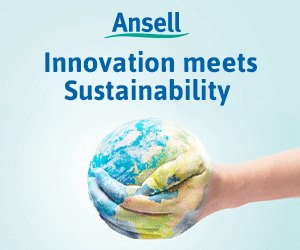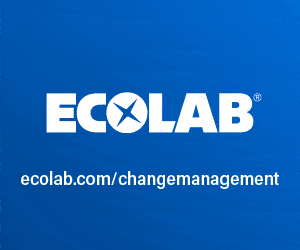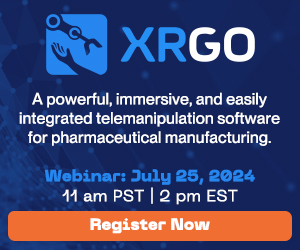The outsourcing of development and manufacturing is fast establishing itself as the norm across the global pharmaceutical industry.
The race to develop viable and effective COVID-19 vaccines - and to roll them out on a global scale - drove a large number of pharmaceutical firms to seek out the support of contract development and manufacturing organisation (CDMO) partners. Vaccine developers were able to benefit from CDMOs' existing specialist infrastructure and expertise to help them bring their discoveries to clinical trial and to commercialise them faster than was previously thought possible. This is something that can benefit pharmaceutical companies across an array of other treatment sectors.
Smart monitoring systems enable maintenance schedules to be proactive, rather than reactive
Time-to-market is not the only benefit of working with CDMOs. By eliminating the need for costly capital investment in new in-house equipment to deliver new projects, outsourcing can significantly reduce the cost and the risk of development for pharmaceutical firms.
Most importantly, outsourcing allows drug developers to focus their attention on what they do best - creating innovative and transformational new treatments.
The rapid growth of CDMOs
Given the benefits of outsourcing, it is no surprise that contract development and manufacturing organisations (CDMOs) the world over are experiencing significant growth. This market growth offers significant opportunities for CDMOs seeking to expand their business, but the resulting competition poses challenges too.
Existing CDMOs in particular face the difficult task of standing out from rivals to attract new drug developer customers, all while maintaining optimum productivity and efficiency. CDMOs may feel under pressure to invest in specialist production lines to attract high-value projects that may not be needed once the project is finished. This investment may be wasted, or may require additional costly work to upgrade for new projects.
It's all in the equipment
With this in mind, CDMOs need to explore new ways of working to help them attract lucrative projects, while delivering the flexibility they need to switch lines over to new production requirements with minimal downtime or financial outlay. How can this flexibility be achieved?
To meet new agility requirements, such production technology must offer ways to reduce downtime during maintenance, washdowns and product changeovers. They must be easy to remove and instal, helping to further reduce the risk of delays, maximising the amount of time the line is up and running. In addition, there must be ways of understanding the performance and status of equipment to better predict where and when maintenance needs to take place to minimise downtime.
Evolving technology
Single Use (SU) technology has evolved to meet these new flexibility demands. As it is specially designed to be used once before disposal, such equipment simplifies cleaning and validation procedures, minimising production downtime.
For aseptic processing lines, this is a particularly important advantage. These sterile disposable components can help ensure optimum sterile integrity in compliance with regulations such as the incoming Annex 1 without the need for extended washdown procedures.
In addition, by streamlining cleaning protocols, SU equipment can optimise containment to protect employees from contact with a highly potent API (HPAPI). They can also ensure true containment during transit between facilities, as well as within manufacturing facilities.
On top of all of this, SU technology is easy to use with no need for extensive training, and it doesn't require upgrades to existing production lines. All of this helps to significantly streamline the integration of the equipment on existing lines, minimising the time and expense of implementing new technology.
SU benefits in action
Several SU components have a measurable effect on production line efficiency. These include:
- The disposable split butterfly valve (SBV) - Reusable SBVs are well established in drug production and are commonly used as a space-efficient alternative to isolator decontaminated units. SBVs enable the contained transfer of powders, such as drug substances and drug products, into and out of process equipment during the pharmaceutical manufacturing process.
- SBVs are made up of an active component that is fitted to the production line equipment and a passive section that is attached to a filling container. Connected together, these two halves enable product to flow from the process line into the container via their interior surface. The product never comes into contact with the exterior environment, ensuring optimum containment and sterile integrity.
- SBVs are now available that use a disposable version of the passive component that connects to the filling container. These SU alternatives offer the same level of containment - aseptic or otherwise - during processing as their reusable counterparts, but have the potential to improve efficiency considerable. The passive component can simply be disposed of between fillings, reducing cleaning and washdown requirements. This simplifies the product changeover process, boosting productivity.
- Specially designed aseptic SBVs can further ensure sterile integrity while enhancing efficiency. The SBVs can come with functions such as autoclaves or SIP (steam in place), or the ability to bio-decontaminate across the disc surfaces. These eliminate any areas of concern to maintain sterility throughout the transfer of product.
- The SU ChargeBag - These can be connected to the disposable passive half of a SBV to allow the contained, sterile transfer of powders between each stage of the manufacturing process, and even between different manufacturing facilities. This further ensures contained and sterile integrity during development, manufacturing and technical transfers, all while reducing cleaning requirements to minimise product changeover downtime.
All of these SU components are manufactured within an ISO Class 6 cleanroom environment and sterilised prior to use. Traditionally, this sterilisation is done via gamma radiation. As a result, SU technology is suitable for use by CDMOs across a variety of potential customer projects that require sterile processing.
The impact of intelligent monitoring
There are other innovations in production line equipment besides SU components that can support CDMOs in supporting their customers through a more flexible and agile development and manufacturing offering. Advanced and intelligent, or 'smart' monitoring systems on production lines also poses exciting opportunities for CDMOs, to reduce production downtime while optimising sterile or containment integrity.
Such equipment can deliver real-time information on the use of manufacturing components throughout the production line, allowing operatives to identify where maintenance is needed before they impact on performance. This means they can plan maintenance schedules proactively, rather than reactively, helping to keep downtime to a minimum, without affecting sterility or containment.
Real-time usage data can allow the rapid creation of audit trails
This isn't the only advantage of real-time line monitoring. Real-time usage data can allow the rapid creation of audit trails to allow CDMOs to proactively manage validation programmes on their aseptic lines. This can help CDMOs to support customers in proving conformity to legislative requirements, and demonstrating they are doing everything they can to protect the wellbeing of both employees and end-patients.
The latest smart monitoring tools can showcase real-time data on an online dashboard that can be viewed on computers or mobile devices even from remote locations. As a result, operatives can monitor and analyse production lines in different facilities and even while they are on the move.
Agility is crucial to differentiation in a competitive CDMO market
The last few years have really highlighted the unique value that outsourcing can bring to the global pharmaceutical industry, not just in terms of increasing the speed of delivery for development projects, but ensuring optimum quality for the end product too. It is understandable, therefore, why the CDMO sector is growing so strongly, and why this expansion is showing no sign of slowing down.
Nevertheless, new growth opportunities bring with them greater competition for CDMOs. Rivals will seek to increase their own market share, while new players, or competitors from overseas, will appear on the market, offering their own unique capabilities to attract customers. With this in mind, CDMOs need to take action now to explore how they can optimise their services and ensure they stand out in the marketplace.
Flexibility and agility in manufacturing operations is key to delivering this differentiation. By not only being able to support even challenging aseptic or HPAPI projects, but that they can deliver a wide range of project volumes and turnaround capacity when it is needed, CDMOs can distinguish themselves from competitors. They can demonstrate to customers that they are uniquely placed to support them in meeting their project needs, whatever they may be, both now and in the future.
In doing so, flexible and agile CDMOs will be able to continue to support drug developers and add value to their relationships, supporting the wider pharmaceutical industry's long-term growth.




